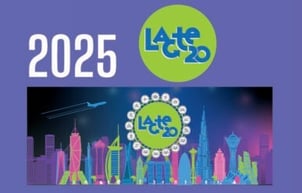Don’t believe the hype - they are different solutions for different problems
The art of translation has long been a bridge connecting cultures and fostering understanding, and with the explosion of AI technology, this bridge is taking on new dimensions.
The AI journey within global events, conferences, and even global organisations begins with achieving a delicate balance between the demand for real-time translation and the quest for utmost accuracy. It is in this balancing act that the true potential and limitations of AI translation come to light.
Breaking it down to its simplest of terms - what we are talking about here is taking speech in one language and delivering the same meaning spoken in another language. Simultaneous interpreters do that, and now AI speech solutions are beginning to do the same. With some differences.
But first, which is it - interpretation or translation? Why do we call the people who translate one language to another “interpreters” and not “translators”? Well, while some of the time they are translating language, much of the time they are interpreting the meaning of the spoken word.
Translation is rather literal, taking what has been said in one language and finding the equivalent words in the second. Think of a word-for-word translation, even though the second language might require the ordering of these words to be completely different.
Sometimes the mapping of these words is not one-to-one, and instead of simply substituting one word for another, it becomes phrase substitution. The essence is still the same, but with an interpreter, the interpreter understands the associated nuance and therefore doesn't translate it literally, rather, they interpret it.
Professional Interpretation vs AI Speech Translation: The battle lines are drawn
The relationship between professional interpretation and AI speech translation is ‘complicated’. While AI promises efficiency and speed, the human touch brings nuance, cultural sensitivity, and a deep understanding of context. As a result, many event/ conference organisers and global corporations are grappling to strike the right balance between ensuring seamless translation versus an interpretation that resonates with diverse audiences.
As the adoption of AI speech translation increases, accuracy and timing are emerging as pivotal challenges that need to be overcome. The real-time nature of translation at international events places a premium on instantaneous and precise interpretations.
Can AI meet this demand consistently, or do the nuances of language still elude its algorithms?
Sure, it seems like AI is storming the global consciousness, and it would be no exaggeration to describe it as the current ‘biggest thing’ that is being tested, monitored and debated in businesses and governments across the world. At the core of AI’s assault on language functions are language engines, which, by themselves, are underwhelming.
However, we should not rely on the engines themselves but rather focus on the training those engines receive. They have the power to learn from tens, hundreds, thousands, and millions of conversations. Conversations between different people on different topics in different languages, learning not from one person’s point of view, but many.
Professional Interpreters and AI translation are different
From time to time in certain scenarios, there is an argument that AI speech translation is equal to interpreters - but this is only when interpreters are being literal. In the real world, it does not take long for interpreters to get into the reductive strategy of interpretation. AI does not interpret what it’s being said, it renders everything in a different language and leaves the interpretation and extracting the meaning to the audience.
AI speech translation cannot detect or decode emotion (at the moment, at least). AI works on the words alone, not the way they were said. It cannot make a distinction between what emotion someone has put behind words as they speak them. AI speech translation does not get humour, sarcasm, frustration, anger, or any other emotional signals.
When at events or global conferences, understanding the emotion behind the spoken words is crucial to ensure the correct interpretation and avoid misunderstandings, AI speech translation is still far behind humans in this respect. AI subtitles, however, allow the user to read what the speaker has said in another language while they can still hear the original speech, potentially allowing the audience to infer the speaker’s emotions.
On the other hand, AI tools don’t get tired, need food or coffee or breaks for the restroom. AI can provide a consistent accurate translation at a relatively low-cost point. What AI translation does is increase the opportunity for significantly more multilingual events, conferences or business communications. It is in ‘out-of-scope’ situations where lack of availability of professionals, or budget, keeps events from being multilingual - this is where we believe AI can be used as an alternative solution.
The reality for multilingual events
The simple reality is that, currently human interpretation and AI translation are two very different solutions. Each with its own place/ use and should not be seen as an ‘either/ or’ solution.
Overall, this is good news for event planners, conference organisers and global businesses as they have the freedom to choose the approach that best fits their unique challenges and goals.
More than that, event planners, conference organisers and global businesses can combine both human interpreters and AI to scale up their language offerings. Some languages can be supported through simultaneous interpretation, while others are supported through AI.
If you can look past the battle of ‘human interpreters vs AI speech translation’ and see the wider value of bridging language barriers, this uncovers more opportunities for the use of professional interpreters.
Related articles:




 More download links
More download links



